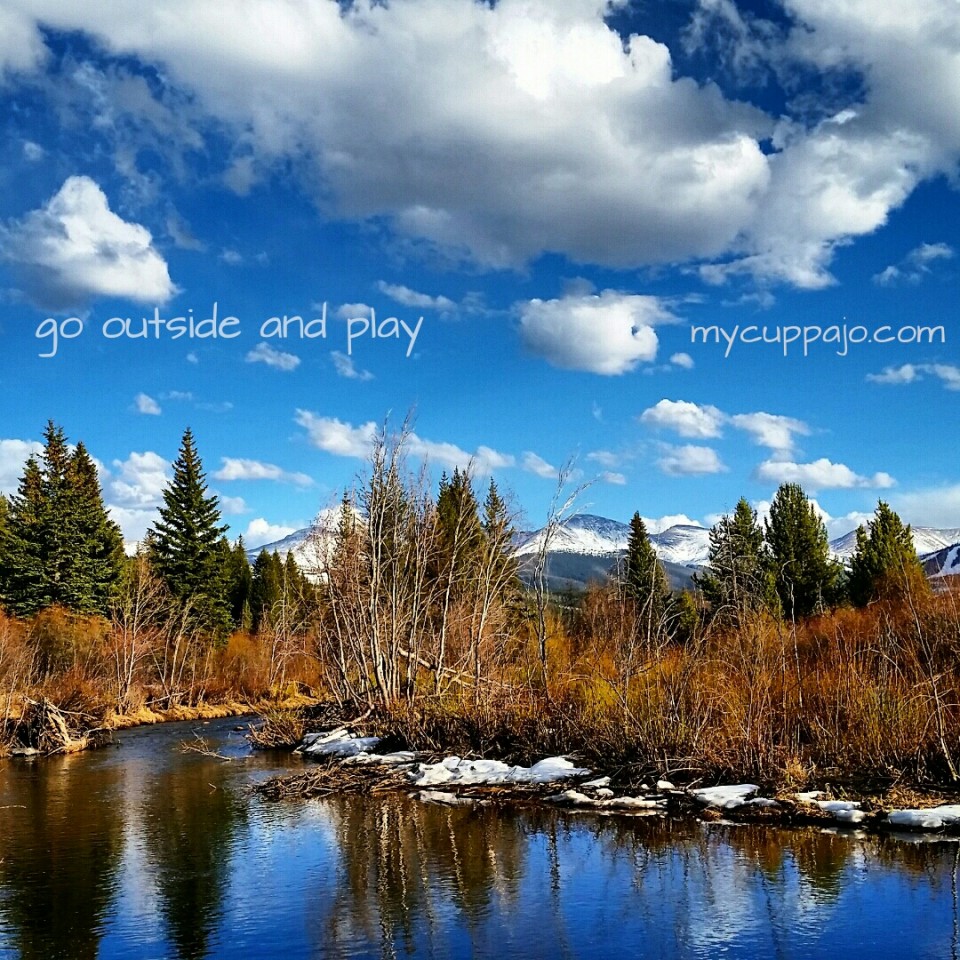In the first part of this post on movement and pain I talked a bit about how I didn’t think about movement and posture much outside of the gym and lifting heavy things during training; how after I got injured, had surgery, and had persistent pain, I obsessed about movement and posture ALL THE TIME, to my detriment; and how I feel that the focus on corrective, prescribed movement and ideal posture has put us in a box that too narrowly defines movement.
This narrow view of movement and posture takes us further away from our natural inclinations to move through a variety of postures throughout the day, like we used to when we were kids. It further represses our innate desires to move in ways we enjoy, that are comfortable, and that are meaningful or functional for us, movements that will look different for everyone.
There is no right or wrong. (Note: heavy lifting is different – form is important there, but I’m not talking about lifting weights. I’m talking about your every day walking, sitting, standing, lying about, bending over, twisting, shifting, swaying, fidgeting, wriggling about sort of movements).
It’s not really about poor posture and bad movement
As well-intentioned as I think many of my coaches, orthos, friends, teachers, and therapists were, I don’t think it was poor posture, asymmetries, or incorrect movement that led my pain to persist. Rather, it was trying to move within a precise, confined set of movement and postural parameters that was at odds with what my body wanted to do, with what it could do, that led my pain to persist.
The external ideal of posture and form and symmetry was an unattainable goal for me, which led to all sorts of conflicts, in body and mind.
But posture and movement are important
Movement and posture are important, but not in the ways we’re told, not even the ways I was taught in my recent M.S. program in kinesiology. There is no universal ideal of movement, no such thing as perfect posture. We’re built to move, we’re not built to sustain any one posture for an extended period of time – no matter how ‘perfect’ it looks, it’ll get uncomfortable. Moving through a variety of postures throughout the day (the hour! The minute!) is what’s important.
And our movement will look different based on our anatomy, our goals, our upbringing, our strength, our athleticism. On the way we want to move, on what we enjoy, on what we like, or dislike.
The difference
Being able to move through full ranges of motion is important, but it doesn’t have to look a certain way and a full range of motion is going to be different for everybody and change over time. I have a reconstructed hip joint – it’s going to be different than my other hip and different from anybody else’s hip.
Being able to move through a variety of postures comfortably is important, but it doesn’t have to look a certain way and it certainly shouldn’t be sustained for any length of time. Any sustained posture, no matter how ‘perfect’ it looks, is going to cause discomfort.
So changing up postures, whatever they may look like, is the key, not trying to perfect a specific posture – we’re not meant to be still for long periods of time, we’re built to move. We’re not statues, we’re mobile beings.
And we’re each unique, so it makes sense that our movement will be unique, too. We’re all built differently, we all have different rhythms, different likes, different goals, different cultural upbringings, different exposures to movement.
There are plenty of ways to achieve any movement goal. If you tell three different people to get a ball from one side of a room to another, you’re likely to get three different responses. One person may kick it, another may throw it, and another may pick it up and carry it. And within each of those three movements, different people will kick differently, throw differently, pick up and carry differently.
There is no right.
Climbing out of the movement prescription box
I feel like I didn’t really start getting a handle on my pain until I got out of the prescriptive movement box. Until I stopped obsessing over my postures and form and just moved through postures throughout the day, without worrying about if they were right. When I stopped thinking of movement in terms of sets and reps and minutes and form and just moved again, without thinking so much about it.
When I just did what came naturally.
I fidgeted, I slumped, I stood, I knelt, I sat on my legs, I sat on one leg, I laid on the ground, I stood on one leg. I walked, I climbed, I stumbled, I skipped, I twirled, I boarded, I swayed, I danced, I hopped, I SUPed, I stooped, I bent over, I twisted, I hiked, I played.
It took me a looooonnnnngggg time to get there. For years I had been listening to my Egoscue coach Elliott tell me that our bodies are designed to move, in all sorts of ways, at any time. That our we’re resilient, and amazingly capable of healing ourselves. That there’s no one right way to move and that nothing need be off the table because of my pain (injury is different – don’t get it twisted!).
That we’re built to play.
It just took a long while (a going on 3 years while), an M.S., and a pain summit for it all to sink in.
I think this was in part because, as great as I think Egoscue is, there is a lot of emphasis on posture, even though in practice it’s much more than that.
It’s about being aware of your body, about listening to your body and moving in ways that feel good, about trying to get better at moving through different postures, about easing into movements that are worrisome, about gaining fuller pain-free ranges of motion, about getting over fear of movement outside the clinic, about having fun and pursuing movement you enjoy, about not pushing through pain but also not being afraid to explore the pain a bit, to nudge the pain a bit, either.
It’s about moving mindfully, not vigilantly. It’s about getting back to your best, most functional, most active, most natural you.
But I was hung up on the posture thing for a long time.
Thankfully, I finally understood that ideal posture isn’t a universal thing, that there isn’t one universal standard that everyone should aspire to.
Ideal posture and movement is an individual, ever-changing thing.
I finally realized this because even though my posture still sucked, I’m still all twisted and counter-rotated and torqued, my pain is way better. I finally understood that the ‘ideal’ posture I was trying to achieve wasn’t based on some external reference point, some poster on a wall or some skeleton propped up in a corner, it was based on an internal reference point, unique to me and only me.
The ‘ideal’ was the positions and movements where my body feels best, moves best, recovers best. And it’s going to change over time, it’s going to change within any given moment. And change isn’t a bad thing.
The way I think about movement now
Now, the way I think about movement is that I don’t really think about movement. I don’t obsess about it anymore. I don’t feel guilty if I don’t do my therapeutic exercises. I don’t feel confined to doing sets and reps of any one thing to feel better.
I pay attention to my body, I listen to it and try to do what it tells me it needs to do. If I feel tight, I move about to loosen up and try to relax the tension. If I feel unstable, I do some balance exercises to try and feel more stable. But mostly I just move.
Now I walk without thinking about my lumbopelvic rhythm (yes, that was a thing I’d think about!), my posture, my glutes firing, or my gait mechanics. I bring my phone to take pictures and I kneel or squat or lie on my belly or climb fences to get the shot I want. I even skip and twirl sometimes when I’m out on the trail. I don’t care if anyone is looking. I enjoy myself.
I play on obstacle courses. I hike and snowshoe and cross-country ski. I practice yoga in my living room. I dance with (at?) my dog (also in my living room). Sometimes I knock out some push-ups and squats or I play on the stairs. I stretch because it feels good. I snowboard, something I never thought I would do again.
When I’m at work on the computer or writing, I don’t sit or stand still anymore. I wiggle, I squirm, I stand up, I sit down, I kneel, I lie on the floor. I have horrible postures sometimes, I just don’t stay in them very long. When I get the urge to move, I move. I set reminders to get up and walk around and break away from the screen or the notebook.
I move through all kinds of postures all the livelong day.
I don’t compare how I do any of these things to anyone else.
I just move
And I have much less pain.
The point is, my ability to successfully manage my pain came when I explored movement again. When I was creative, pushed boundaries, nudged myself a bit further along. When I expressed myself through action and motion. When I didn’t hold myself back. When I didn’t follow movement rules or try to meet some external ideal of what movement and posture should look like. When I found what I enjoyed, what worked for me (all that stuff above).
I finally feel like I achieved success, and got out of my head about this whole pain thing, when I got away from the idea of movement as specific exercises for specific quantities of reps or time. When I got back to the way I used to think about movement. back to when I didn’t really think about movement much at all, when I didn’t obsess over form or posture, when I didn’t focus on how I was moving or sitting or standing ALL THE TIME.
When I just did it, when I just did what came naturally.
Bringing it all together
I got better at embracing this way of moving again, and of thinking of therapeutic movement quite a bit differently, after attending the SD Pain Summit and hearing some of the approaches to movement that the presenters take with their pain patients. It was like being granted permission by people in the know that you don’t just have to do therapeutic or prescribed exercises to get out of pain, that it’s in movement itself that there is a benefit and that it doesn’t have to look the same for everybody.
It’s in the internally driven movement, the intrinsically motivated movement, the curiosity and exploration of movement, that benefits folks, that is sustainable because it’s not a chore, it’s not an onus, it’s not a finite prescription: it’s a way of life.
That exploration of movement is not always encouraged when we’re in pain. We’re often prescribed specific movements, rather than encouraged to get to get to know our bodies a bit more, to listen to our bodies and move in ways that it wants to move, to try a bunch of different things out, to discover what movements we want to do, to figure out what we’re good at and what we’re not so good at so that we can try and get better at what we’re not so good at.
Rather than being encouraged to feel comfortable moving, shifting, finding positions and movements of comfort and ease, finding ways of moving that are enjoyable and fun and pleasing, we’re told to sit with erect posture, to pull our shoulder blades back, to tighten our core, to engage our glutes, to move within a set of certain specified confines. Which can lead to us not moving much at all out of fear and confusion, of feeling like we’re getting it wrong.
That’s so counter-intuitive! So restrictive! So unnatural! 
That’s so hard on body and mind.
Shifting the way we think about movement
It’s not going to be easy to change our way of thinking, the inclination we have to suppress, prescribe, and control movement, to a way of encouraging movement exploration and freedom of expression.
To be ok with moving in counter-cultural ways, to stand when everyone is sitting, to dance when everyone is looking, to fidget and shift and change our posture because we’re just freaking uncomfortable and want to move.
But a shift is needed.
There is no one right way to move, no ideal that need be met, no perfect method of rehabilitation, no specific set of exercises that will lead to a life of pain-free movement, no perfect diet: no one way of thinking or moving or being.
The most beneficial way of moving may just be to sit still for a bit, quiet our minds, and listen to our bodies to see what it wants to do, then just do that for a bit.
To find ways of moving that are enjoyable, that are effortless, that help you to release some tension and feel good, that make you feel flushed and warm and happy, and that may even surprise you a bit.
To move all the livelong day. To let some of those movements be unexpected, against the norm, counter-cultural. Fun. Creative. Expressive.
Move how you want to move, without following the rules, without trying to control it so much.
Fidget. Skip. Dance. Wriggle. Rock. Roll. Stand. Jog. Sit. Shift. Sway. Twirl. Hop. Throw. Squat. Kneel. Bob and weave. Bounce. Wave. Walk. Bike. Leap. Swim. Skip. Shuffle. Climb. Crawl. Jump. Wiggle. Run. Act. Lift. Train. Have fun.
Move.
Be creative. Don’t be afraid to be different. Be unique. Just be you.
(note: much of what I’m writing about in this post stems from how I got to thinking after Barrett Dorko‘s talk at the SD Pain Summit on ideomotion, but this post reflects my own thinking and experiences and not necessarily what Barrett intended to convey. Barrett is a prolific essayist and I highly recommend checking out his work for a more accurate reflection of his approach and thinking. I also highly recommend you check out all of the folks who were at the Pain Summit – I’ll highlight others in future posts. The Pain Summit changed my life, if you work with people in pain, it’s a must. For 2016 it’s limited to about 25o folks so sign up now!)
Think Different image courtesy of Stuart Miles at FreeDigitalPhotos.net
Thanks for reading my post folks! Another long one – maybe I should have broke parts 1 and 2 up and had 4 posts total. I’m still figuring this blogging thing out ;) As always, I welcome your thoughts, comments, and feedback. And if you happened to like what you read, please share with your friends! Or sign up for the monthly-ish newsletter, filled with all sorts of interesting.


Pingback: A run, a rant, and a few more thoughts on fear and movement